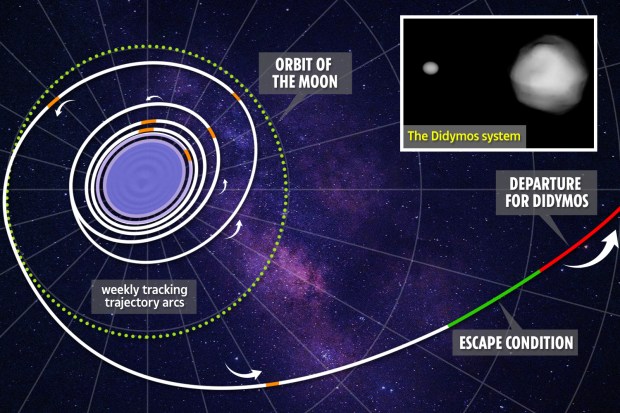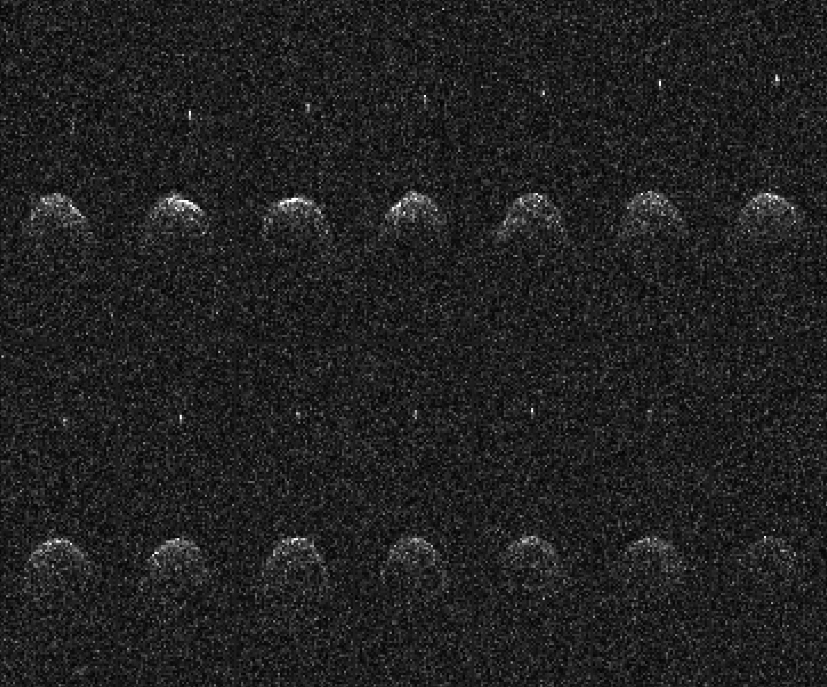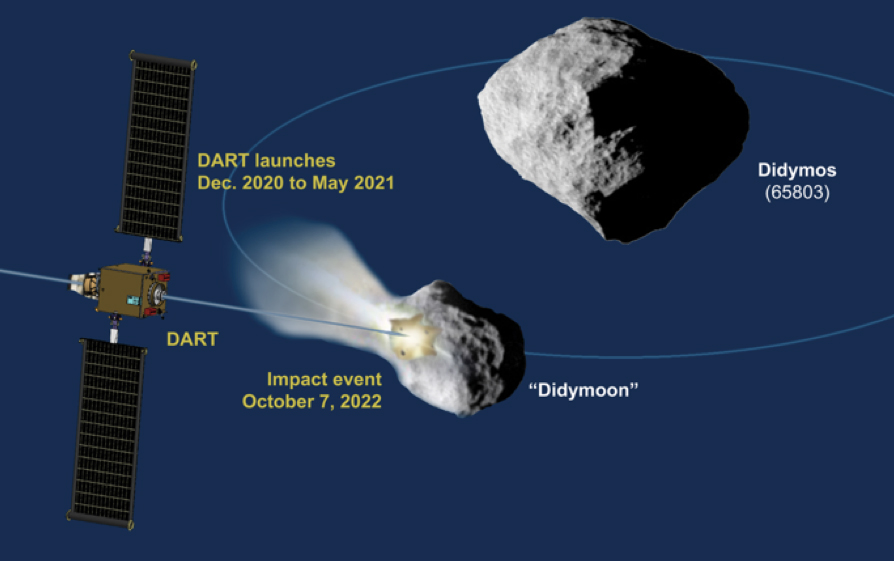Nasa picks Elon Musk’s SpaceX for world-first mission to deflect ‘hazardous’ MOON in 2022 – by crashing a spaceship into it
The incredible feat could one day save humanity

NASA has chosen SpaceX for a daring mission to crash into a "hazardous" asteroid's moon – knocking it off course.
The rocket firm – helmed by Tesla chief Elon Musk – will begin the mission in June 2021.
But SpaceX won't actually intercept Didymos' small "moonlet" until October 7, 2022, when the asteroid will be roughly 7million miles from Earth.
Nasa has been mulling the Double Asteroid Redirection Test (DART) mission for years.
But this week, Nasa chose SpaceX as the launch partner for the mission, making use of its capable rocket systems.
Nasa describes DART as "the first-ever mission to demonstrate the capability to deflect an asteroid by colliding a spacecraft with it at high speed".
Simply put, Nasa and SpaceX are going to send a probe into space that will "crash into" asteroid Didymos' moon.
"DART is a planetary defense-driven test of one of the technologies for preventing the Earth impact of a hazardous asteroid: the kinetic impactor," Nasa explained.
"DART’s primary objective is to demonstrate a kinetic impact on a small asteroid.
"While Didymos’ primary body is approximately 800 meters across, its secondary body (or “moonlet”) has a 150-meter size, which is more typical of the size of asteroids that could pose a more common hazard to Earth."
Didymos is officially classified as a "potentially hazardous asteroid" and "near-Earth object", which means it's high on Nasa's list of space priorities.
It was first discovered by the University of Arizona in 1996, using a telescope at the Kitt Peak National Observatory.
It orbits the Sun once every 770 days, and rotates quickly every 2.26 hours.
Nasa's DART probe will "deliberately crash itself" into the moonlet at about 6km/s.
The probe will be aided by an onboard camera and autonomous navigation software.
What's the difference between an asteroid, meteor and comet?
Here's what you need to know, according to Nasa...
- Asteroid: An asteroid is a small rocky body that orbits the Sun. Most are found in the asteroid belt (between Mars and Jupiter) but they can be found anywhere (including in a path that can impact Earth)
- Meteoroid: When two asteroids hit each other, the small chunks that break off are called meteoroids
- Meteor: If a meteoroid enters the Earth's atmosphere, it begins to vapourise and then becomes a meteor. On Earth, it'll look like a streak of light in the sky, because the rock is burning up
- Meteorite: If a meteoroid doesn't vapourise completely and survives the trip through Earth's atmosphere, it can land on the Earth. At that point, it becomes a meteorite
- Comet: Like asteroids, a comet orbits the Sun. However rather than being made mostly of rock, a comet contains lots of ice and gas, which can result in amazing tails forming behind them (thanks to the ice and dust vapourising)
Nasa hopes that the collision will change the speed of the moonlet in its orbit around the main Didymos asteroid by a fraction of one percent.
This should be enough to measure using telescopes in Earth, allowing Nasa to track the success of the mission.
Fortunately, Didymos isn't destined to hit Earth anyway – but is deemed "hazardous" due to its proximity to our planet.
But Nasa proves that its technique could work, asteroid deflection could serve as a vital "planetary defence" system for future generations.
The mission won't be cheap: it'll cost Nasa $69million (£53million) to launch.
But that's a small price to pay for saving humanity, of course.
MOST READ IN SCIENCE
Nasa's Parker Solar Probe is currently "plunging into the Sun" at 213,000mph as part of a bold investigation into our solar system's star.
The space agency is also on course to find alien life ‘within next few decades’ – but warns we’re ‘unlikely to shake hands with them’.
And Nasa is hoping to send astronauts back to the Moon by 2024.
Do you think Elon Musk is the right man for the job? Let us know in the comments!
We pay for your stories! Do you have a story for The Sun Online news team? Email us at tips@the-sun.co.uk or call 0207 782 4368 . We pay for videos too. Click here to upload yours.

















